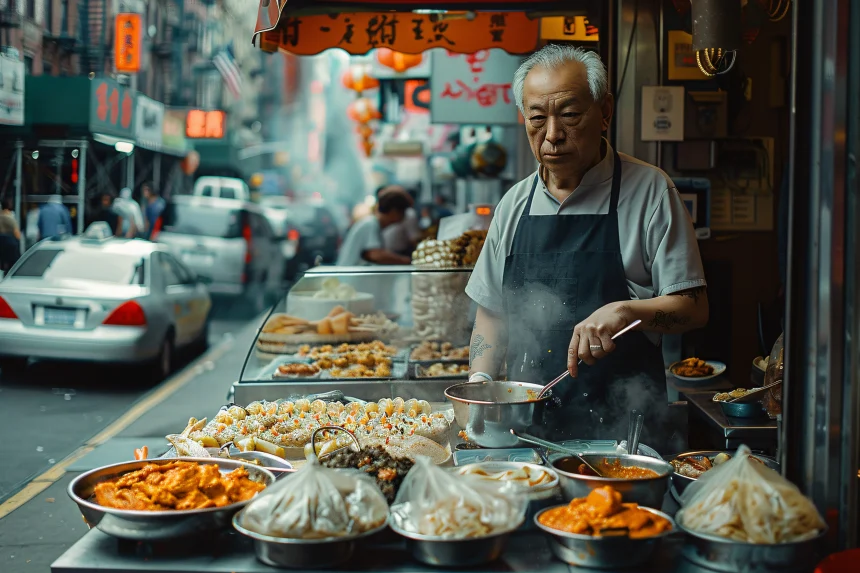It was a humid evening in Singapore’s Chinatown when Mei Ling, a 63-year-old retiree, made her way through the narrow alleys behind the bustling Maxwell Food Centre. With a reusable container in hand and a purpose in her stride, she wasn’t hunting for bargains she was collecting untouched leftovers from hawker stalls. This was not just about feeding herself. Mei Ling was part of a quiet movement, a growing number of residents who view chinatown hawker leftovers consumption as a solution to food waste and an act of community resilience.
The Culture and Community of Hawker Centres
What Makes Chinatown Hawkers Unique?
Chinatown’s hawker centres are more than food courts they’re cultural institutions. Generations of cooks have passed down recipes, serving locals and tourists alike. The food is affordable, abundant, and varied. But with abundance comes an unintended consequence: waste.
A Closer Look at Food Waste
According to the Singapore Food Agency, over 744,000 tonnes of food were wasted in 2022 alone, and hawker centres contribute significantly. Dishes prepared in advance often go unsold by day’s end. While some stalls dispose of the excess, others donate or allow trusted individuals like Mei Ling to collect it.
Understanding Chinatown Hawker Leftovers Consumption
Who’s Involved and Why?
Chinatown hawker leftovers consumption includes not only elderly citizens but also migrant workers, low-income families, and even eco-conscious volunteers. For them, it’s not merely about free food it’s about sustainability, reducing landfill stress, and preserving dignity.
Is It Legal and Safe?
Singapore’s strict food safety regulations mean hawkers must comply with hygiene rules. However, once food is considered leftover, there’s a grey area. Some stalls informally allow collection, while others donate to charities that ensure redistribution under safe conditions. According to a 2023 report by Zero Waste SG, over 35% of hawkers are open to redistributing excess food if safety and legal guidelines are clearly defined.
Sustainability and Social Responsibility
Fighting Food Insecurity
As living costs rise, more Singaporeans face food insecurity. Programs like the Food Rescue Project and SG Food Rescue collaborate with hawkers to collect and distribute leftovers. This small-scale redistribution directly supports families who might otherwise skip meals.
Environmental Benefits
By reducing food waste, the carbon footprint associated with production, transport, and disposal is minimized. For every tonne of food saved from waste, up to 1.9 tonnes of CO₂ emissions can be prevented, according to the National Environment Agency.
Challenges in Chinatown Hawker Leftovers Consumption
Hygiene and Public Perception
Despite the benefits, stigma and hygiene concerns linger. Critics argue that the practice might encourage unsafe food handling. However, most participants emphasize cleanliness and avoid anything questionable.
Logistics and Infrastructure
Another barrier is the lack of structured systems to manage collection and redistribution. Without cold storage, transportation, and timing coordination, the effort often relies on individuals and volunteers.
The Future of Leftover Culture in Hawker Centres
Digital Platforms and Food Apps
Startups like Treatsure and Olio are working to bridge the gap by connecting consumers with surplus food. While still niche, these platforms could integrate with hawker centres to professionalize chinatown hawker leftovers consumption.
Government and NGO Involvement
For this movement to scale, support from local councils, health authorities, and NGOs is crucial. Guidelines, education, and incentives could transform what’s currently informal into an accepted part of food sustainability strategy.
Conclusion: From Shame to Sustainability
What began as quiet, even secretive, food gathering is now being recognized as a vital part of Singapore’s sustainability framework. By embracing chinatown hawker leftovers consumption, communities not only reduce waste but also restore value to what was once discarded. As more people like Mei Ling step forward, one must ask could yesterday’s leftovers be tomorrow’s solution?
FAQs About Chinatown Hawker Leftovers Consumption
1. What is chinatown hawker leftovers consumption?
Chinatown hawker leftovers consumption refers to the practice of collecting and reusing unsold or untouched food from hawker stalls in Chinatown, often for personal use, redistribution, or to reduce food waste.
2. Is it safe to consume hawker leftovers?
Generally, hawker leftovers are safe if handled properly and consumed within a reasonable time. Many collectors are selective and ensure food is clean and freshly prepared.
3. Who usually engages in chinatown hawker leftovers consumption?
The practice is common among the elderly, low-income residents, migrant workers, and environmental volunteers who seek to prevent food waste and support sustainable living.
4. Is chinatown hawker leftovers consumption legal in Singapore?
While not officially regulated, the collection of leftovers is typically informal. It’s advised to seek permission from stall owners and follow safety guidelines to avoid legal or health issues.
5. How does this practice help the environment?
Chinatown hawker lef tovers consumption helps reduce food waste, lowers greenhouse gas emissions, and eases pressure on landfills making it a sustainable community solution.





